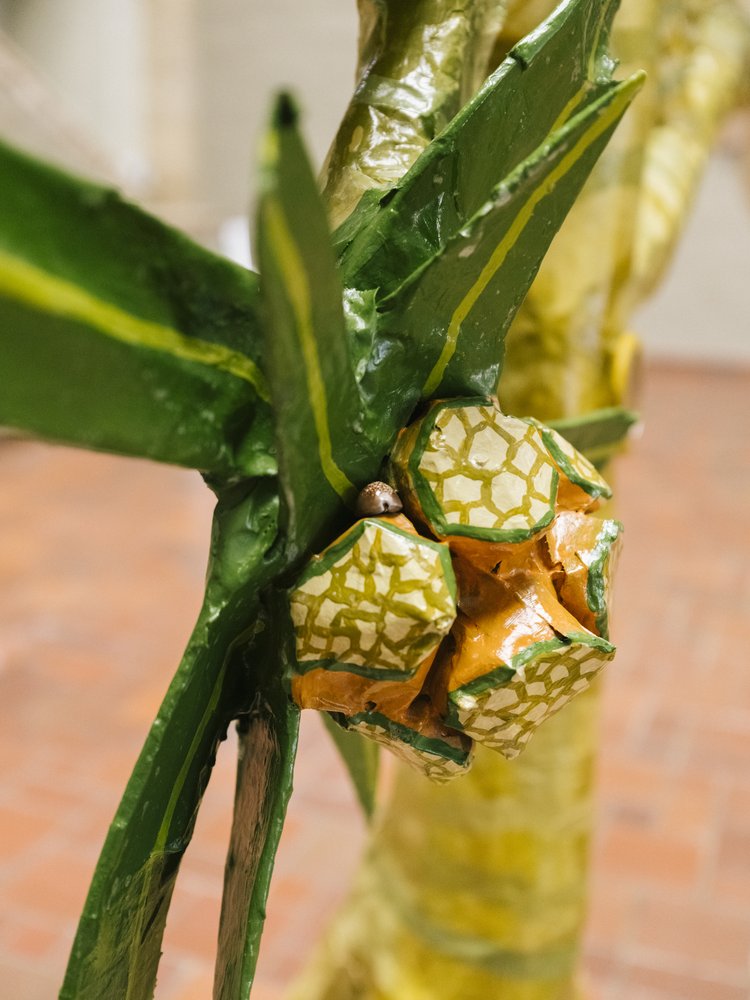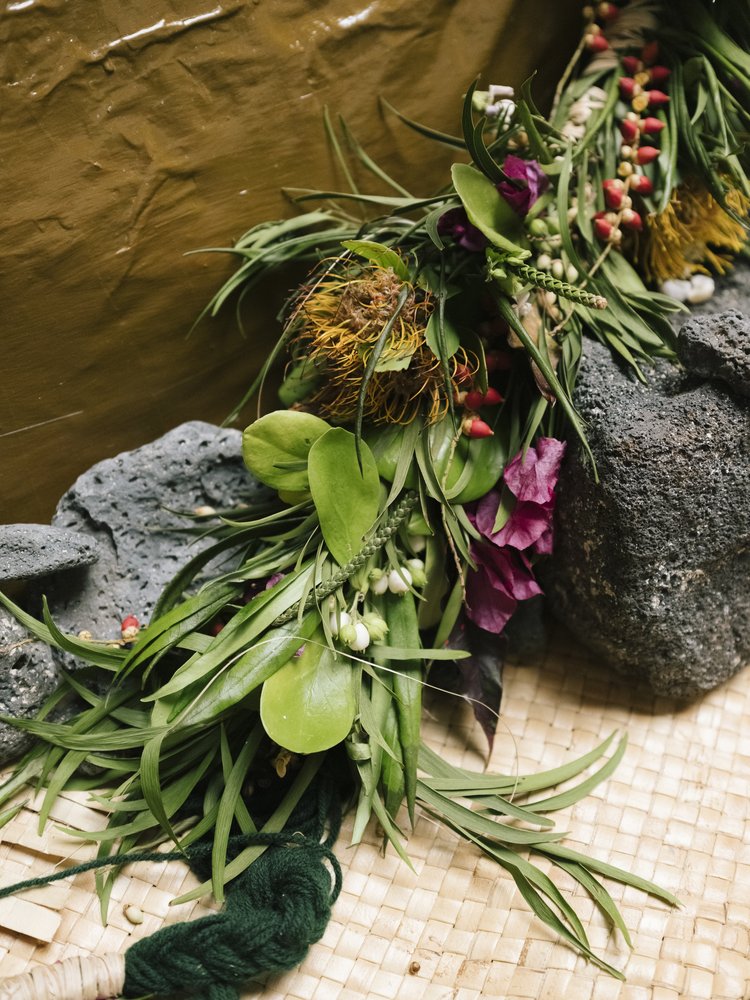Presented by Aupuni Space & the Mayor’s Office of Culture and the Arts
Aupuni Space and The Mayor’s Office of Culture and the Arts are pleased to present an exhibition of works by Amber Khan entitled Recollecting Poi, Pikake and Paniolos, comprised of 3 large scale sculptures highlighting facets of Hawai‘i’s past, present and potential. Khan employs imagery from the natural world of Hawaiʻi with unique cultural references in a delightfully playful manner. She utilizes paper mâché, wood, fiber, paint and found natural objects to materialize these concept
As a child of an American mother and a Pakistani father, Khan’s upbringing was distinct from a kānaka ʻōiwi or kamaʻāina experience, as well as an American experience. Her sense of belonging has always felt disoriented, as if still an outsider to the place she is most familiar with. Khan is interested in hybrid experiences of identity—how we belong to a place and to each other in a multitude of ways and how each of us develop our own perspective by synthesizing a myriad of influences.
Each of the 3 works, Honu Paniolo, Honolulu Weeds and Lei, and Pū Hala with Memory, hold elements rich in their physical, material and cultural conceptual layers. Representational motifs such as a slipper, honu, mynah bird and Hawaiian quilt patterns become visually charged. Khan work allows viewers to connect to their own experiences of Hawai‘i and to elicit an emotional response of nostalgia, pride and belonging. She aspires to celebrate her own memories of Honolulu Hale and highlight the distinct connectedness of Hawai’i’s people with the ʻāina.
The sculptures will be on view at the Hawai‘i State Library through the end of December 2022 located at
478 S King St, Honolulu, HI 96813. Click here for hours.
This project is made possible through the generous co-sponsorship of Creative City.
About Amber Khan
Amber Khan is a mixed media artist from Honolulu and received her MFA in Sculpture from London Metropolitan University School of Art in 2022. Her research and practice explore philosophies around forms of life and living, spatiotemporal identities, nonlinear realities, cultural production, and the natural world.
About Aupuni Space
The mission of Aupuni Space is to provide space for community-based exhibitions and programming that feature Kanaka ‘Ōiwi and Hawaiʻi-based artists, as well as their international collaborators. Aupuni Space is one of the only venues in Honolulu that provides a global contemporary art lens on Hawaiʻi as well as a physical gathering space for locally engaged, experimental and critical voices.
About the artworks:
Pū Hala with Memory is the artist’s sculptural representation of a Hala tree with symbols that reference Khan’s personal connections to Hawai‘i in place of lau hala on its branches. Each branch holds a different motif. The seating platform invites the viewer to ponder the contrasts of materials in real time, activating the artwork and participating with its surroundings. The mirror informs the viewer that they are the necessary final component in the sculpture, to participate in a collective experience and to actively consider their role in engaging with art.
Honolulu Weeds and Lei is a large bust with a quilt pattern Khan designed to reflect her childhood experiences growing up in Kalihi. The bust represents an active embodiment of consciousness within time and space. The lei draped around its neck and shoulders is made of collected foliage; flowers, leaves and weeds from the bushes and trees Khan encounters while walking through Mānoa, where she currently resides. The ephemeral quality of organic material that make up the lei is meant to represent, embody and reframe time. The sculpture is presented fresh and alive, it changes and evolves over the period of exhibition and the piece becomes a time capsule.
Honu Paniolo uses the familiar symbol of the honu as represented by Hawaiian kiʻi pohaku (petroglyphs) and presents it as a Paniolo or Hawaiian cowboy. The removable cowboy hat invites the viewer into active participation. Paniolo can trace their roots to Mexican vaqueros who came to Hawai‘i in the 1830ʻs to share their expertise in cattle ranching. Honu Paniolo points to the deep process of overlap and hybridity has become manifested in aspects of Hawaiʻi’s cultural, historical, socio, political, economic and ecological impacts. The inclusion of the honu suggests another kind of interaction with nature–through commercial agriculture and/or honu as a protected species–the Paniolo encapsulates the contested history of immigrant arrival to Hawai‘i and a particular relationship to land productivity, while the Honu represents the need for environmental stewardship and cultural preservation.











